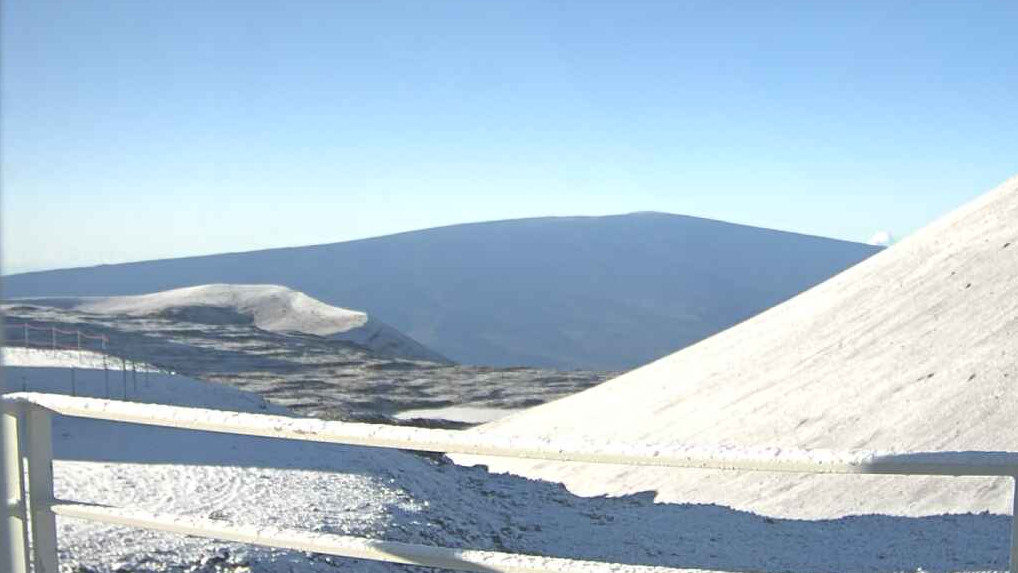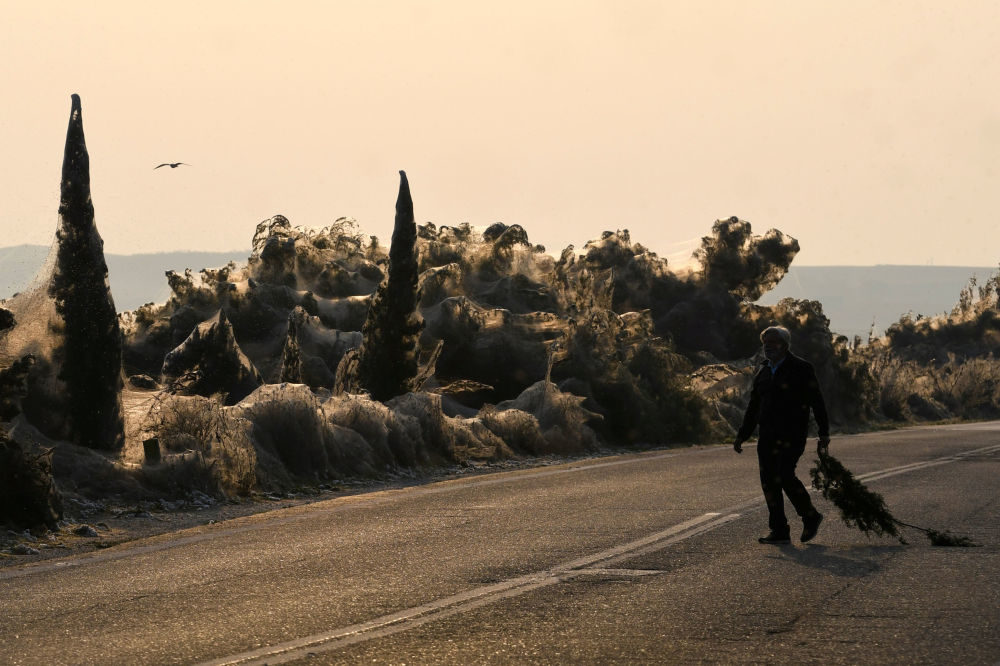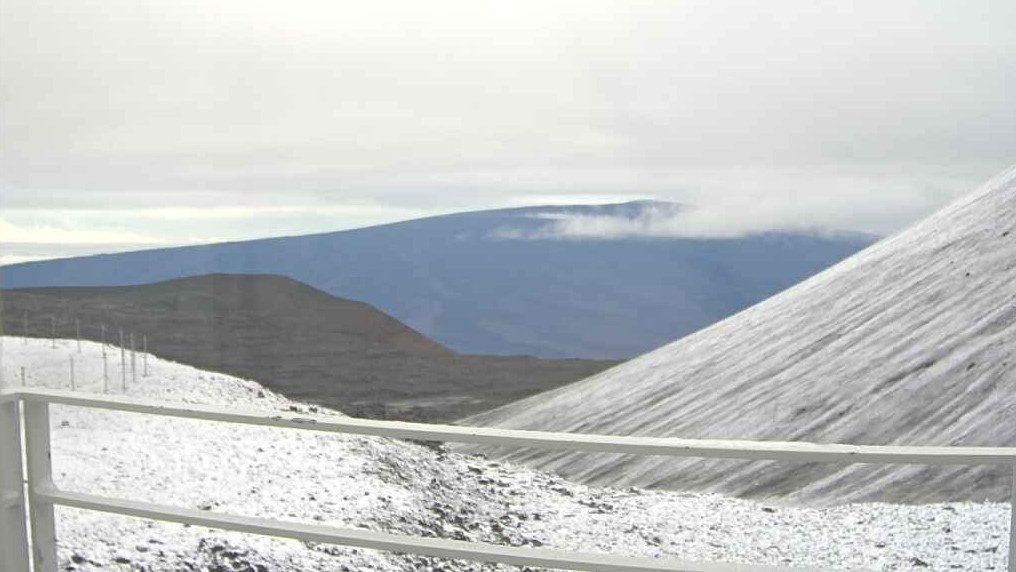
NOAA Mauna Kea cam at 7:12 a.m. on Oct 21
More snow coated the summit of Mauna Kea overnight, as the Flash Flood Watch that has been in effect for Hawaiʻi Island for most of the weekend is no longer in effect.
"The road to the summit of Maunakea is closed to the public at the Visitor Information Station at 9200 ft. due to high humidity, fog, wet and icy road conditions," a ranger message stated this morning.
"Today, the trough aloft will continue to move slowly eastward, with a drier airmass continuing to filter across Maui County and the Big Island during the day," the National Weather Service said. "This should put an end to the threat for flash flooding or thunderstorms, and we have cancelled the Flash Flood Watch. A few heavier showers may still be possible on the Big Island, especially in the afternoon, but thunderstorms appear unlikely as the airmass dries out and stabilizes during the day."



Comment: One wonders the increasing activity of Earth's undersea volcanoes coupled with the cooling above ground is partly responsible for the migrating ice bergs, and perhaps their unexpected shapes:
- Gigantic iceberg A-68 that broke off Larsen ice shelf blocked by dense sea ice, surprising scientists
- Stargate? Saturn sprouts another weird hexagon
- Arctic lake mysteriously disappears in Novaya Zemlya, Russia
- 'Perfectoid geometry' may be the secret that links numbers and shapes
- Stem cells organize using geometry as a guide
- Evidence of volcanic eruptions under Antarctic Ice
- Antarctica is even colder than scientists thought
Also check out SOTT radio's: Behind the Headlines: Earth changes in an electric universe: Is climate change really man-made?